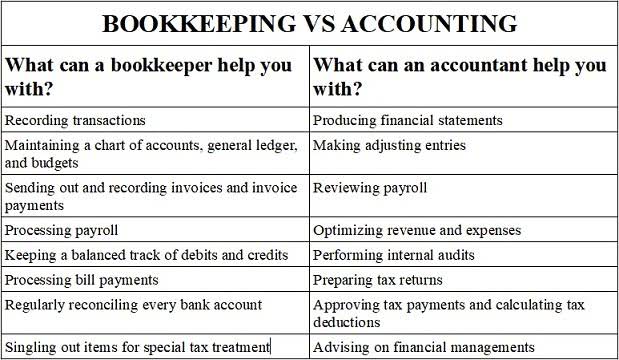
Therefore, the shares outstanding after that date (and retired on 1 September) are not the same as those that existed prior to that date. Thus, the situation during the year was equivalent to having 111,000 shares outstanding throughout the year. Group 2 consists of the 8,000 shares outstanding from 1 April to the end of the year and group 3 is the 12,000 shares outstanding from 1 shares outstanding formula April to 31 August. The weighting of each group by the fraction of the year it was outstanding is shown below.

Issued Vs. Outstanding Vs. Authorized
- In addition, most public companies don’t need to issue more shares, at least in the number required to bump up against the authorized maximum.
- Let us understand the formula that shall act as the basis of our understanding and the formation of the outstanding shares equation through the discussion below.
- Outstanding shares are the aggregate number of shares that a corporation has issued to investors.
- The number of outstanding shares can be found on a company’s most recent quarterly or annual filing with the Securities and Exchange Commission (SEC), usually on its balance sheet in the shareholders’ equity section.
- A company with 100 million outstanding shares, but with 95 million held by insiders and institutions, will have a constrained float of only five million shares, impacting its liquidity.
- A company’s outstanding shares may change over time because of several reasons.
Our work has been directly cited by organizations including Entrepreneur, Business Insider, Investopedia, Forbes, CNBC, and many others. Finance Strategists has an advertising relationship with some of the companies included on this website. We may earn a commission when you click on a link or make a purchase through the links on our site. All of our content is based on objective analysis, and the opinions are our own. In this case, group 1 consists of 200,000 shares deemed to have been outstanding from 1 January to 31 December. Further, the number of shares used in computing the average is to be weighted by the fraction of the year that the shares were actually outstanding.
- Knowing a company’s number of shares outstanding is key when calculating critical financial metrics and determining share value as a portion of ownership.
- But for mature companies with relatively little movement in share count (either basic or diluted), quarterly and annual data from public sources should easily suffice for solid fundamental analysis.
- Outstanding shares decrease if the company buys back its shares under a share repurchase program.
- A stock split occurs when a company increases its shares outstanding without changing its market cap or value.
- Market capitalization — share price times number of shares outstanding — and EPS are both computed using a company’s number of outstanding shares.
- For information pertaining to the registration status of 11 Financial, please contact the state securities regulators for those states in which 11 Financial maintains a registration filing.
How to Calculate Shares Outstanding (Step-by-Step)
By contrast, many older stalwart companies are likely to have a number of shares outstanding that matches its number of shares fully diluted. Investors can use the number of outstanding shares to evaluate a company’s financial health and performance. It helps in calculating key financial ratios and understanding the company’s ownership distribution. While outstanding shares determine a stock’s liquidity, the share float—shares available for public trading – plays a crucial role. A company with 100 million outstanding shares, but with https://x.com/BooksTimeInc 95 million held by insiders and institutions, will have a constrained float of only five million shares, impacting its liquidity.
- Generally, you won’t need to calculate this number yourself and it will be listed for you on a company’s 10-Q or 10-K filing.
- And so, for a loss-making company, potentially dilutive shares can be excluded if they are “anti-dilutive”.
- Authorized shares, meanwhile, are the maximum number of shares a company can issue, based on its corporate charter.
- The reason for that is that most public companies have instruments that provide for shares to be issued in the future.
Understanding outstanding shares
When you look a little closer at the quotes for a company’s stock, there may be some obscure terms you’ve never encountered. For instance, restricted shares refer to a company’s issued stock that cannot be bought or sold without special permission by the SEC. Often, this type of stock is given to insiders as part of their salaries or as additional benefits. This refers to a company’s shares that are freely bought and sold without restrictions by the public. Denoting the greatest proportion of stocks trading on the exchanges, the float consists of regular shares that many of us will hear or read about in the news.

Related investing topics

These instruments include stock options, stock warrants, and convertible debt. The number of outstanding shares influences market capitalization, a critical metric for valuing companies. Investors use outstanding shares to gauge a company’s size and compare it with peers. A significant change in outstanding shares, such as through a stock buyback or issuance, can signal strategic shifts and impact investor sentiment. Earnings per share is a measure of a company’s valuation, calculated by dividing its profit by the number of shares outstanding. A company’s market capitalization is the current market value of all of its outstanding shares.
- Companies that have simple capital structures only need to report basic EPS.
- Weighted average shares outstanding is the process of weighting every number of common stock to reflect how much time they were in effect.
- A publicly-traded company can directly influence how many shares it has outstanding.
- From there, scroll down until you find the section in the 10-Q or 10-K called “Capital Stock.” All the details you need will be there.
- Calculating the weighted average number of shares resolves the problem by taking into account the length of time that the changed number was in effect.
- This is because short sellers, when choosing to cover, can only buy the shares actually in the float.
- It is a less-commonly used number in the financial reporting of privately-held businesses.

At the time, GE discussed plans to split into three companies and to divest from many businesses. They determined that reducing their share count from nearly 8.8 billion to roughly 1.1 billion better aligned with this vision (1). The first of these, unrestricted shares, is also known as “the float.” These https://www.bookstime.com/articles/how-to-calculate-shares-outstanding are the shares that can be actively traded on the open market. The life of common stock goes through a few phases, and understanding each step is important for putting the common-stock-outstanding number into proper perspective.